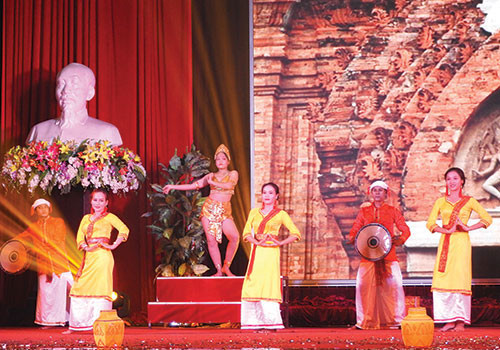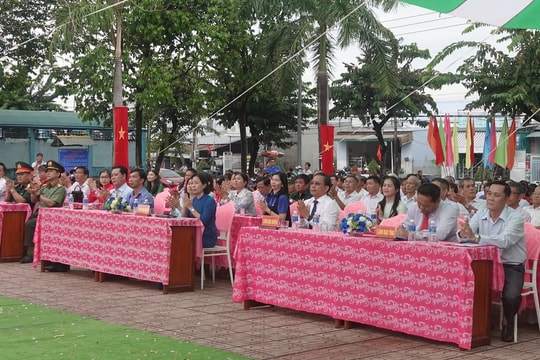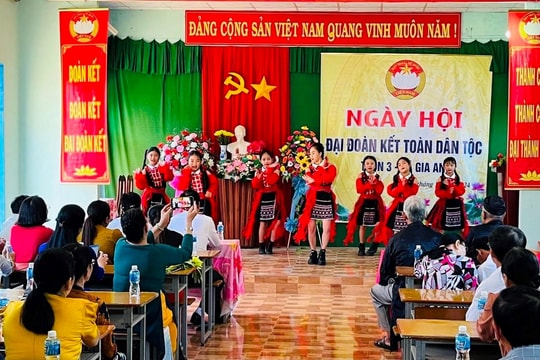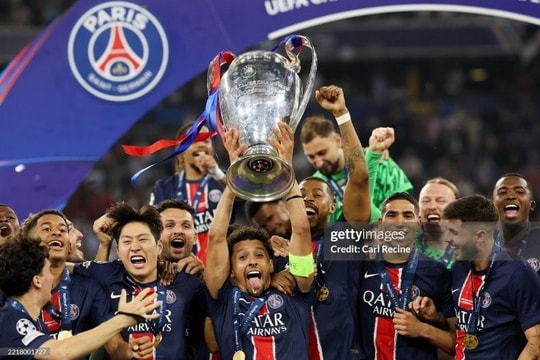BTO - In 1951, President Ho Chi Minh affirmed that "Culture and Art are a battlefield, artists are also soldiers on the front". Up to now, this viewpoint is still valid. When the contingent of public ministries in the province's culture and information sector is contributing their energy and enthusiasm to build and develop an advanced Vietnamese culture with a strong national identity.
Bringing culture and art to the grassroots
After the success of the August Revolution, the provisional government of the Democratic Republic of Vietnam was born. In the Declaration dated August 28, 1945, the Government established the Ministry of Information and Propaganda, the forerunner of the Ministry of Culture & Information (now the Ministry of Culture, Sports and Tourism). Since then, August 28 has become a traditional day for people working in culture and information.
During the wars, together with the people of the country, thousands of officials and artists of the culture and information industry wholeheartedly devoted their efforts to the country and battlefield by creating works of art to cheer strongly the power of fighting and production, enhance the spiritual vitality of our army and people with the determination to "Sing over bomb sound". The nation's heroic history is even more highlighted with the sweat and blood of thousands of cultural soldiers who had sacrificed heroically for the nation's revolutionary cause.
During the renovation period, implementing Central Resolution 5, Session VIII on "Building and developing an advanced Vietnamese culture imbued with national identity", the province's culture and information sector continued to promote its role in the cultural and ideological front.
Beginning from only a few dozen people, the organization has been over 370 cadres, civil servants, public employees, and workers, most of them have university and post-graduate degrees up to now. The team is increasingly maturing in terms of management capacity, ability to direct and organize activities that focus on improving the quality of art performance activities, and serving the public. Typically some contests, festivals, high-quality art programs, such as sea star singing, Bolero love song festival, movie festival, etc have hosted the competition of professional dance works of ethnic Vietnamese minority groups. They exploit folk arts of ethnic minorities in the province to create many traditional cultural values, creating a unique identity in the performance shows.
Bringing culture and arts to the grassroots levels activities, with the focus on serving remote and ethnic minority areas are also regularly carried out. In the content of art performances and mobile film shows, there is always a propaganda section on the Party's guidelines and policies and the State's laws on building a new countryside, security and order, traffic safety, and environmental hygiene, food safety and hygiene, etc.
 |
| Colorful Cham dance and musical performance |
Preserving and spreading cultural values
Thanks to good propaganda work, the historical, famous, scenic, geological, and geomorphologic values in the province have been preserved and aroused. The whole province has 28 national monuments, 42 provincial monuments. Many monuments and landscapes were evaluated by domestic and foreign friends as a "not-to-miss" destination when returning to Binh Thuan. These are Duc Thanh School, Po Sah Inu Tower, Ten Thousand Thuy Tu, Suoi Tien, Doi Cat Bay (Phan Thiet City), Thay Thim Palace (La Gi), Ta Cu Mountain Pagoda, Ke Ga Lighthouse (Ham Thuan Nam, Bau Trang (Bac Binh), Co Thach Pagoda, communal house of Binh An village, Ong Nam Hai mausoleum, Multicolored rocky expanse (Tuy Phong), Phu Quy island district, etc.
Such an honor that the province has currently had 2 intangible cultural heritages, the traditional pottery profession of the Cham people in Binh Duc village, Phan Hiep commune (Bac Binh), and the Cau Fishery festival at ten thousand Thuy Tu (Phan Thiet city). The Ministry of Culture, Sports and Tourism included the national intangible cultural heritage. In particular, in 2013, the art of amateurs singing Binh Thuan along with 20 other provinces and cities nationwide was recognized by UNESCO as the representative intangible cultural heritage of humanity.
In the current trend of integration and development, the province's culture, sports, and tourism have always improved its role and responsibility in management and anti-cultural distortion. At the same time, it aroused creativity among the cultural and artistic activists in order to well implement the 9th Party Congress’s Resolution (Session XI) on "Building and developing Vietnamese culture and people to response the sustainable developing country requirements”.
Translated by Uyen Linh (Source: Binh Thuan Online



.jpg)



















.jpeg)

.jpeg)


.jpeg)


